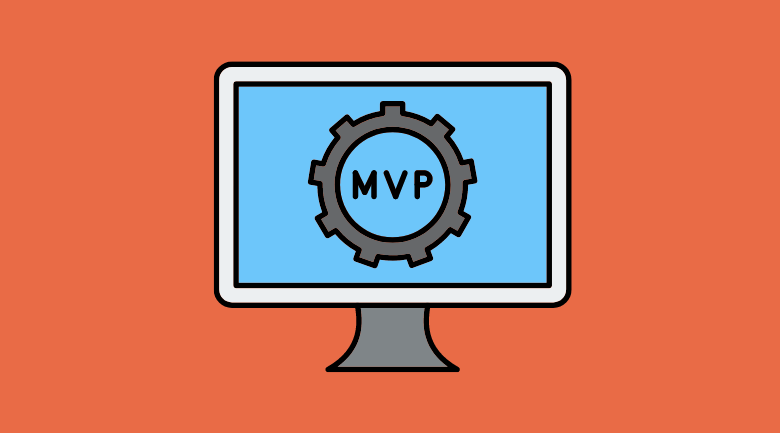Factors Affecting the Cost of MVP Development

MVP, or minimum viable product, is a version of a product with just enough features to satisfy early customers and validate a product idea. MVPs are often used to test the market and gather feedback before launching a full-fledged product.
The cost of MVP development can vary depending on a number of factors, including the complexity of the product, the experience and expertise of the development team, the technologies used, and the location of the development team.
Understanding the MVP Development Process
Before we dive into the cost factors, it’s essential to have a clear understanding of the MVP development process. An MVP is a stripped-down version of your product that includes only its core features and functionalities. It serves as a prototype that helps you validate your idea without investing excessive time and resources.
The MVP development process typically includes the following stages:
1. Idea Validation
– Conducting market research
– Identifying the target audience
– Defining the problem your MVP will solve
2. Feature Prioritization
– Identifying essential features
– Eliminating non-essential features
– Creating a minimum viable feature set
3. Design and Development
– Creating wireframes and mockups
– Developing the MVP
– Iterative development based on user feedback
4. Testing and Feedback
– Conducting usability testing
– Gathering user feedback
– Making necessary improvements
5. Launch and Iteration
– Launching the MVP to a limited audience
– Continuously improving based on user data
– Scaling up as needed
Now, let’s explore the factors that can significantly affect the cost of MVP software development.
1. Complexity of the MVP
The complexity of your MVP is one of the most significant cost drivers. The more complex the features and functionalities, the more time and resources are required for development. IT managers need to carefully consider which features are absolutely essential for the MVP and which can be deferred to future versions.
Unique Insight: Prioritize features that directly address the core problem your MVP is solving. Simplicity is key in reducing development costs while maintaining value for your users.
2. Technology Stack
The choice of technology stack can have a profound impact on development costs. Different technologies and programming languages come with varying levels of complexity and expertise requirements. Additionally, the availability of developers with expertise in specific technologies can affect hiring costs.
Unique Insight: Consider the long-term implications of your technology stack. While opting for cutting-edge technologies may be tempting, it can increase development costs and make it harder to find skilled developers.
3. Development Team
The composition of your development team plays a crucial role in cost estimation. Factors such as the size of the team, their location, and their level of expertise can all influence costs. Hiring experienced developers may be more expensive, but it can lead to a quicker and more efficient development process.
Unique Insight: Consider the option of outsourcing or augmenting your in-house team with remote developers. This can help reduce costs while accessing a broader talent pool.
4. Project Timeline
The timeline for MVP development can also affect costs. Rushing the development process to meet tight deadlines can lead to increased expenses due to overtime or the need for additional resources. A well-planned and realistic timeline can help manage costs more effectively.
Unique Insight: Allocate sufficient time for testing and feedback iterations. Rushing through these phases can result in costly post-launch fixes.
5. Testing and Quality Assurance
Ensuring the quality of your MVP is essential, but it comes with its own set of costs. Quality assurance and testing are necessary to identify and fix issues before the MVP is released to users. Neglecting this phase can lead to higher long-term costs as you address user-reported problems.
Unique Insight: Implement automated testing where possible. It can reduce testing time and costs while maintaining high quality.
6. Scalability
While your MVP may start small, it’s essential to consider future scalability needs. Building a foundation that can easily accommodate growth can save substantial costs down the road when you expand your product.
Unique Insight: Use cloud-based infrastructure and consider serverless architectures to scale efficiently and cost-effectively as your user base grows.
7. Regulatory and Compliance Requirements
Depending on your industry and target market, there may be regulatory and compliance requirements that need to be addressed in your MVP. Failing to do so can result in legal issues and costly fines.
Unique Insight: Early consultation with legal experts can help you understand and address compliance requirements from the outset, potentially saving significant costs in the long run.
8. Post-Launch Support and Maintenance
After the MVP is launched, ongoing support and maintenance are critical. User feedback and changing market conditions may necessitate updates and improvements. Budgeting for post-launch support is essential to ensure the long-term success of your product.
Unique Insight: Consider implementing user feedback mechanisms within your MVP to gather valuable insights for future development, reducing the cost of extensive market research.
Conclusion
Developing an MVP is a strategic step in bringing your product to market efficiently. However, understanding and managing the cost of MVP software development is crucial for IT managers. By carefully considering the factors discussed in this article, such as the complexity of the MVP, technology stack, development team, project timeline, testing, scalability, compliance, and post-launch support, you can make informed decisions that optimize costs while delivering a valuable product to your users.
Remember that the cost to hire app developer and build an MVP software development is an investment in the future success of your product. By making wise choices at every stage of development, you can achieve your goals while staying within your budget.




